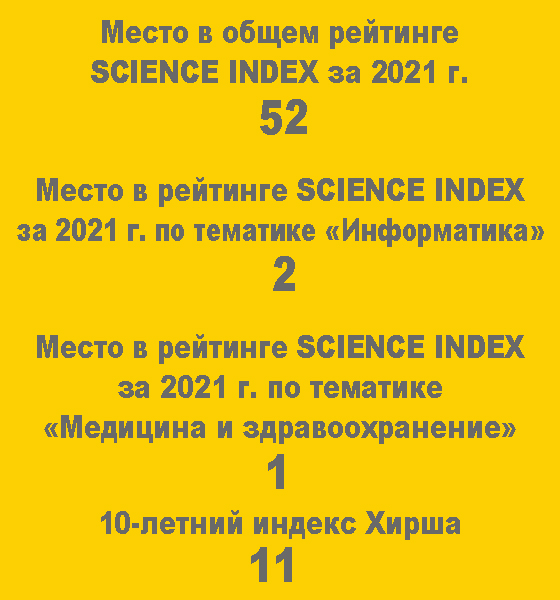Deep machine learning (artificial intelligence) in ultrasound diagnostics DOI: 10.29188/2542-2413-2020-6-2-22-29
- Lebedev G.S. – Dr. Sc., professor, Head of the Department of Information and Internet Technologies at Sechenov University; Head of the Department of Innovative Development and Scientific Design of the Central Research Institute of Organization and Informatization of Health Care of the Ministry of Health of the Russian Federation
- Maslyukov A.P. - 5th year student of the Medical School «Medicine of the Future» of the First Moscow State Medical University them Sechenov (Sechenov University)
- Shaderkin I.A. – PhD, Head of the Laboratory of Electronic Health, Institute of Digital Medicine, Sechenov University, ORCID 0000-0001-8669-2674
- Shaderkina A.I. – 1st year student Institute of Clinical Medicine of the First Moscow State Medical University them I.M. Sechenov (Sechenov University), ORCID 0000-0003-0639-3274
 2338
2338 Aim of the review is to analyze methods of machine learning (artificial intelligence – AI) in ultrasound investigation and to search solutions connected with the methodology.
Materials and methods. Authors conducted careful analysis of literature using e-library, Pubmed, Schoolar Google, IEEE and analyzed materials published on this theme from more than 106 journals and conferences (Med Imaging, Cell Biochem Biophys, International Journal of Advanced Computer Science and Applications, Journal of Medical Systems etc), and from this materials were selected only 36 which described application of machine learning for ultrasound.
Results. We showed opportunities of application of machine learning methods in detection of different organs diseases such as breast tumor, thyroid nodules, focal lesions of liver, cardiovascular system diseases. In all these cases САО showed quite successful results, on a par and sometimes better than skilled clinicians’ ones.
Conclusions. Application of САО in ultrasonic investigation has several complications such as bad quality of images, artifacts, few images for analyzing. For solving these problems preliminary image processing with artifacts remove, data augmentation, developing a data base is used. Nevertheless, currently there are huge differences in amount and modality of typesetting used in different researches, therefore it is hard to fairly estimate their capacity. For solving of this problem developing of standardized database is required. It should become the aim of further researches.
Conflict of interest. The author declare no conflict of interest
| Attachment | Size |
|---|---|
| Download | 694.51 KB |


















































